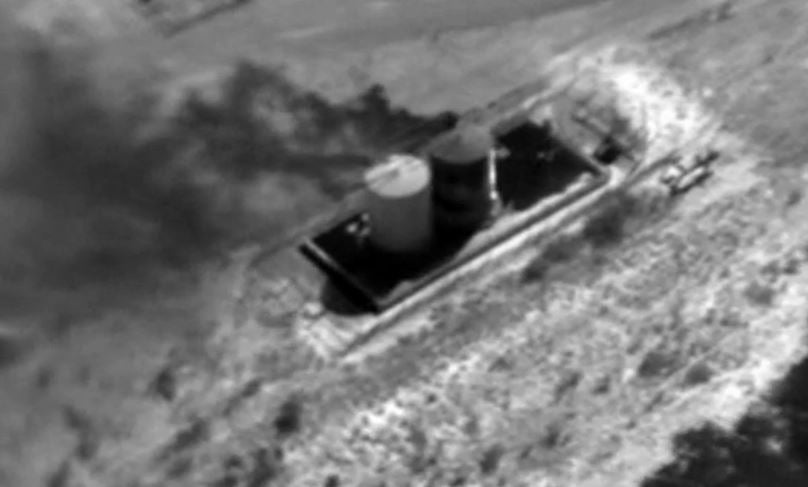
In a historic announcement today, the U.S. Environmental Protection Agency (EPA) has finalized the first national standards for reducing methane pollution from the oil and gas sector. These methane rules are part of the Obama Administration’s suite of new regulations aimed at reducing the amount of greenhouse gases released from our nation’s energy sector and will help slow climate change and protect us from some of the more extreme effects.
Methane is the second most prevalent greenhouse gas emitted from human activity and has a warming effect more than 20 times greater than carbon dioxide over the long term. Methane emissions are accelerating climate change and negatively impacting the health of millions of Americans by increasing the formation of smog, triggering asthma attacks in children, increasing the risk of cardiovascular disease, cancer, and even causing premature deaths.
These new regulations represent a significant opportunity to protect public health. As the Assistant Administrator for EPA’s Office of Air and Radiation, Janet McCabe, highlighted in a briefing earlier this month, “[m]ethane is extremely potent- more potent than carbon. When you capture emissions, that’s extremely important to public health.” It is particularly welcome news that the final rules are stronger than the initial proposal, as EPA learned of even more cost-effective steps that can be taken to reduce methane pollution from the oil and gas sector.
By 2025, these methane reductions will have the same 20-year climate benefits as:
- burning 11 fewer coal-fired power plants every year
- taking 8.5 million cars off the road every year
These rules will save around $100 million in natural gas that would have otherwise been wasted through leakage.
Currently wasted natural gas is worth almost $2 billion and could have met the heating and cooking needs of over 7 million homes for a year!
These rules will bring a cut in methane emissions from the oil and gas sector by up to 45 percent by 2025 – a reduction totaling 510,000 short tons of methane from both new and modified pollution sources. That’s the equivalent of reducing 11 million metric tons of carbon dioxide! According to EPA, the rule will also result in $170 million of net climate benefits by 2025, costs that include reduced health care costs and reduced emergency relief costs.
Today’s announcement will likely be criticized by the usual industry opponents of environmental protection. They will claim that (dubious) data show emissions are on the decline – holding it up as evidence that the problem is solved and claiming significant reductions will result in significant costs to industry. But as Mark Brownstein of Environmental Defense Fund makes clear, “[t]he lion’s share of the reductions needed can be achieved simply by transforming the best practices already demonstrated by companies in the industry into the standard practices used throughout the industry.” SACE commends EPA for taking action to ensure that states and companies that have stepped forward to develop and implement best practices to reduce methane leaks no longer have to compete against companies that tolerate leaks, such as those illustrated in this blog.

The new methane rules are enacted under the New Source Performance Standards section of the Clean Air Act – methane has previously not been regulated from these “sources.” In its methane rule announcement, however, EPA also indicated that it is taking steps towards creating methane regulations for existing sources, which are not covered by the rules announced today. EPA explained it is moving forward with regulations for existing methane sources because those emissions are “higher than previously understood.”
Imagine invisible oil spills happening every day, with every official data source oblivious to the ongoing disaster. To fill in the missing pieces, EPA explains that it “needs … [to know] what emission controls are being used in the field, how those are configured, whether electricity or generating capacity is available, and how often sites are staffed or visited.” Using the information that industry is now being required to submit, EPA will be able to “develop and apply standards to effectively reduce emissions from existing sources.” SACE strongly supports these additional steps as crucial in addressing the climate crisis of continuing methane leaks.
Although we’ve known for years about the leakage of methane pollution into our air from the oil and gas sector, as natural gas production and fracking has increased over the years, concerns about increased emissions from these sites has risen. New studies recently found that the amount of leakage is significantly higher than previously reported. In fact, yesterday, the Union of Concerned Scientists released a new report highlighting the impacts from “tight oil” and the impacts of our increased reliance on natural gas. Fortunately, there are cost-effective tools available today to reduce these emissions and provide economic benefits to the industry from the capturing of these emissions and secondary use of the gas.
This new pollution standard is a significant first step to stopping methane leaks from new and modified sources in the oil and gas industry. SACE thanks EPA for acknowledging this significant warming pollutant and taking action. It is a huge step forward in protecting public health and the climate and great news for all of our communities in the Southeast. We look forward to continued work that will address emissions from existing oil and gas operations as we all work to combat the real dangers of climate change.